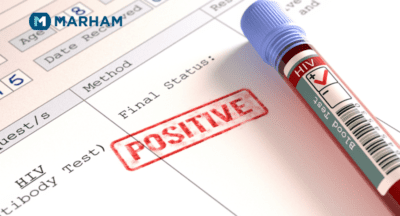HIV, also known as the Human Immunodeficiency Virus, is a disease that affects millions of people all over the world. An estimated 190,000 people in Pakistan are thought to be infected with HIV, which has become more common in recent years.
Despite efforts to stop the spread of HIV in Pakistan, it still faces many obstacles, such as a lack of awareness, restricted access to healthcare, and stigma and discrimination against those who are HIV positive.
Highlights
- According to the National AIDS Control Program (NACP), there were an estimated 165,000 people living with HIV in Pakistan as of 2019.
- Certain groups are at higher risk of contracting HIV in Pakistan, including people who inject drugs, men who have sex with men, transgender people, and sex workers.
- Despite efforts to raise awareness and combat discrimination, HIV stigma remains a significant issue in Pakistan.
- Antiretroviral therapy (ART) is available in Pakistan for people living with HIV, but access to treatment can be limited in some areas.
In this blog, we will look at the current situation with HIV in Pakistan, the difficulties and roadblocks to solving the problem, and potential fixes to stop the spread of the virus and help those who are afflicted.
HIV and Pakistan
With an estimated 165,000 HIV-positive citizens in Pakistan as of 2019, the human immunodeficiency virus (HIV) is a significant public health concern. The number of HIV cases that have been reported has been rising recently, according to Pakistan’s National AIDS Control Program (NACP).
HIV can be spread through
- Unprotected sexual contact
- Sharing needles or other injecting equipment
- Mother to child during pregnancy, childbirth, or breastfeeding
- Exchange of blood, semen, vaginal fluids, or breast milk
The high prevalence of HIV in Pakistan is caused by a number of factors, such as low levels of awareness of HIV and its transmission, stigma, and discrimination against those who are HIV positive, insufficient access to healthcare services, and a dearth of HIV prevention and treatment options.
Prevalence of HIV in Pakistan
With 165 000 people carrying the virus, HIV prevalence in Pakistan’s general population is estimated to be less than 1%. As of June 2019, there were 24 331 (14.7%) more people registered with the National AIDS Control Program (NACP) than there were 4500 in 2013.
HIV Rate in Pakistan
HIV (Human Immunodeficiency Virus) transmission has been kept to a minimum in developed nations because of protected sexual contact and screening of blood products and other bodily fluids.
Although the prevalence rate of HIV/AIDS is currently very low in Pakistan, it is at high risk of this infection.
The number of HIV/AIDS cases reported in Pakistan has been rising steadily since 1987. The total number of cases reported had reached 6000 by 2010 and is still increasing.
Several significant strategies need to be put into place in order to control this dangerous disease. You may take help from Marham to book an appointment with a doctor for HIV.
HIV Cases in Pakistan
In the four years since the COVID outbreak started in 2019, more than 1,500 people in Pakistan’s Sindh province have tested positive for HIV, according to information from the provincial health ministry.
Only 24,331 people (15%) in Pakistan who are HIV positive are aware of their status, according to the National AIDS Control Program (NACP), which estimates that over 165,000 people in the nation are infected.
In 2019, just 17,149 of the NACP program’s participants received antiretroviral therapy. (ART). Lack of awareness and illiteracy in rural areas of the nation are believed to have hurt the AIDS control program.
HIV Treatment in Pakistan
Antiretroviral therapy (ART) is used for the treatment of HIV. ART involves taking a daily combination of HIV medications (known as an HIV treatment regimen). Antiretroviral therapy is recommended for everyone with HIV.
Although antiretroviral therapy (ART) cannot cure HIV, it can help patients with the virus live longer and healthier lives.
HIV Patients in Pakistan
HIV prevalence in Pakistan has increased alarmingly over the past few decades, along with the number of fatalities. According to the National Health Survey, Pakistan has approximately 150,000 HIV patients, including 75,000 in Punjab, 15,000 in Khyber Pakhtunkhwa, and 5,000 in Baluchistan.
The HIV epidemic in the nation affects everyone, including drug users, sex workers who identify as male, female, or transgender (MSW, FSW, TGSW), men who have sex with men (MSM), and transgender people.
The Pakistani government has launched a number of initiatives to combat the HIV epidemic, including expanding access to HIV testing and treatment, encouraging the use of condoms and harm reduction programs for drug users, and increasing public awareness of HIV through public education campaigns.
Ending Notes
To combat the HIV epidemic in Pakistan, however, much work needs to be done. In order to improve access to healthcare, raise public awareness of HIV prevention and treatment, and lessen stigma and discrimination against those who are HIV-positive, ongoing efforts must be made in these areas.
Marham offer the best medical services for HIV treatment through the experienced doctors. You can book an appointment with these doctors right now.
FAQs
1. Is HIV curable in Pakistan?
Antiretroviral therapy is a name for HIV treatment (ART). Although ART is not a cure, it can control the virus to prolong your life, improve your health, and lessen your chance of spreading HIV to others.
2. Why HIV cases are increasing in Pakistan?
The HIV epidemic has taken hold in Pakistan, primarily among injecting drug users (IDU), male, female, and transvestite sex workers (MSW, FSW, and TSW), as well as the repatriated migrant workers, due to moderately high drug use and a lack of acceptance that non-marital sex is common in society.
3. Which country has the highest prevalence of HIV?
Eswatini has the highest prevalence of HIV in the world, with almost 27% of its population HIV-positive..

